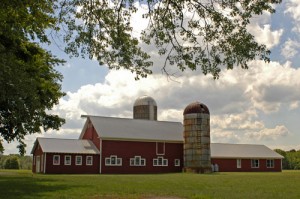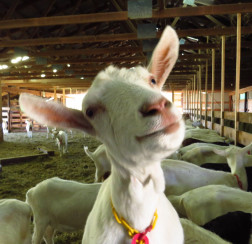Columbia Land Conservancy’s (CLC) mission statement reads as follows:
“The Columbia Land Conservancy works with the community to conserve the farmland, forests, wildlife habitat, and rural character of Columbia County, strengthening connections between people and the land.”
From my experience here thus far, I can confidently say they are living up to this mission. CLC is a 501(c)(3) non-profit organization located in Columbia County, NY that provides a broad range of services. The conservancy protects over 30,000 acres of land, holding and monitoring around 24,077 acres of conservation easements. In addition to privately held easements, CLC manages 10 public conservation areas that provide the region with a wide variety of outdoor recreation opportunities. The work does not stop with land conservation activities, CLC staff offer a wellspring of information and expertise on trail development, conservation planning and agricultural issues. Local governments, organizations and individuals all benefit from CLC workshops, education programs, conferences, funding initiatives and partnership development.

CLC doesn’t just perform land grabs for the sake of increasing their holdings, they maintain a conscious effort to connect people to the outdoors through their public conservation areas and to preserve working lands through their agricultural programs, which I have spent the majority of my time here working on. Right from the get-go I was tasked with helping to fill out a grant proposal for the newly reenacted New York State Farmland Protection Program.
Funding Farmland Conservation
While most conservation easements are donated, state and federal funding is made available for some farm and forest conservation projects. When an easement is donated, property owners often receive tax breaks for forgoing their development rights. However, when the development rights are sold, the landowner receives a portion of the fair market value for their property. This can be very important for farmers who are then able to reinvest the money into their farm business. In both instances, the subsequent lower assessed value without the development rights helps keep future sales of the property affordable for farmers. So far, CLC has helped secure over $11 million dollars of funding to protect 6,500 acres of working farmland.

Linking Farmers with Landowners
Another very successful working farms program at the Columbia Land Conservancy that I have been able to help out with is the Farmer Landowner Match Program. This program, as the name would suggest, seeks to connect farmers without access to adequate farmland to landowners who would like their land to be farmed but currently lack a farmer. This program has been quite successful and currently boasts over 28 ongoing successful matches.
A sister to the match program is the budding Conserve a Local Farm (CALF) program. CALF seeks to work with realtors and property sellers to connect them with prospective, conservation-minded buyers. Farms with high conservation value that are currently for sale and at risk for development are identified and recruited into the program. The goal is to facilitate the sale of these properties to a buyer who will place a conservation easement on the property and keep it in agricultural production either themselves or through the Farmer Landowner Match Program.

Providing Expertise
Tying all of these programs together, and another area where I have been able to help, is CLC’s role as farm advisor. Not only do the website and staff house valuable resources for landowners and farmers, a series of fall workshops provides a chance to explore topics in depth with a wide variety of experts. This year’s workshop series focuses on farmland leasing and estate planning. I have been able to help put together informational material for participants and have been involved in coordinating with workshop presenters. This has allowed me to understand how different farmland advisors fit into the picture and to gain a better grasp of all of the moving parts involved in ensuring that a successful long term enterprise can be established on conserved farmland. It is not enough to protect farmland from development only to have it become fallow. Helping to establish and nurture successful farm businesses ensures that Columbia County’s prime farmland remains in production.
As farmland is becoming more scarce and expensive, through its conservation efforts, match programs and educational initiatives, CLC is helping farmers young and old gain access to land and remain on prime agricultural land currently in production. As the average age for an American farmer continues to climb, there needs to be opportunities for young and beginning farmers to have access to land and capital. Conserving farmland, providing resources for beginning farmers and matching land seekers with land holders is a major step towards solving these concerns. CLC is continuously innovating to tackle these issues as they evolve.
Bard CEP Coursework
So far, I have leaned heavily on my first-year coursework at Bard CEP. I have spent a lot of time using my GIS (Geographic Information System) skills to create maps for grants proposals, potential CALF properties and farms that enter the Farmer Landowner Match database. I have also been able to call on my knowledge of the Farm Bill and other legislation to inform my understanding of the broader politics surrounding farmland conservation issues. Finally, experience interpreting environmental laws has helped me navigate some of the legalese encountered when reading up on easements and real estate transactions. I feel fortunate that I fell into an organization doing meaningful work that I can contribute to.

